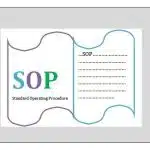Beta-lactam test for sensitivity of antibiotics, such as penicillin and cephalosporin in pharmaceutical, is vital for personnel working in environments where these antibiotics are frequently used. This can help prevent allergic reactions, which can be severe and even life-threatening.
Table of Contents
The most common methods for testing sensitivity include:
1. Skin Testing

Penicillin Skin Testing (PST):
This is the most reliable method to determine if someone is allergic to penicillin. It involves two steps:
Prick Test: A small amount of penicillin reagent is applied to the skin using a tiny needle to prick the surface.
Intradermal Test: If the prick test is negative, a small amount of penicillin is injected just under the skin.
Cephalosporin Testing:
Similar skin testing can be performed using cephalosporin reagents, though it is less standard.
2. In Vitro Tests
Specific IgE Blood Test:
By this method analyzes the blood’s concentration of certain IgE antibodies to cephalosporins or penicillin. When compared to skin testing, this method is less painful but might be less accurate.
Basophil Activation Test (BAT):
This test measures the activation of basophils (a type of white blood cell) in response to beta-lactam antibiotics.
Steps for Conducting Sensitivity Testing
1. Preparation:
– Ensure that personnel have not taken antihistamines or other medications that could interfere with the test results for at least 48 hours prior.
– Obtain a detailed medical history to check for previous allergic reactions to beta-lactam antibiotics.
2. Skin Prick Test (SPT):
– Clean the skin area (usually the forearm) with alcohol.
– Apply a drop of penicillin reagent and a drop of control solution (usually histamine for positive control and saline for negative control).
– Use a lancet to prick the skin through the drops.
– Observe for a reaction (usually a wheal and flare) after 15-20 minutes.

3. Intradermal Test:
– If the SPT is negative, proceed with the intradermal test.
– Inject a small amount of diluted penicillin or cephalosporin reagent into the dermis (the middle layer of skin).
– Observe the injection site for reactions after 20 minutes.
4. Interpretation:
– A positive test result typically shows a raised, red, itchy bump at the test site, similar to a mosquito bite.
– A negative test result shows no significant reaction.
Read Also: Analysis of Azithromycin Tablet 500
Observations After Test
– Always have emergency equipment and medications (such as epinephrine) on hand in case of a severe allergic reaction.
– Record all test results and any adverse reactions observed during the testing.
Actions After Test
– For personnel with a positive test, it is crucial to avoid exposure to beta-lactam antibiotics and consider alternative medications.
– Provide education on recognizing and managing allergic reactions.
Conclusion
Beta-lactam testing of sensitivity for personnel in penicillin and cephalosporin zones is a proactive measure to ensure safety and prevent severe allergic reactions. Conducting these tests under medical supervision and following proper protocols ensures accurate results and immediate management of any adverse reactions.
Frequently Asked Questions
What is the Beta-lactam Test?
Beta-lactam Test is a diagnostic assay used to detect the presence of beta-lactam antibiotics in various samples, typically in dairy products such as milk. Beta-lactam antibiotics include penicillins, cephalosporins, monobactams, and carbapenems, which are commonly used to treat bacterial infections in both humans and animals.
What is the Beta-lactam Test for Personnel?
The Beta-lactam Test for personnel in manufacturing zone is a diagnostic procedure used to detect the presence of beta-lactam antibiotics on the hands, clothing, or personal protective equipment of individuals working in environments where these antibiotics are handled.
What is the importance of Beta-lactam Test?
This test is very important because beta-lactam antibiotics, such as penicillins and cephalosporins, are among the most common causes of drug allergies and can lead to severe allergic reactions in sensitive individuals. Ensuring that personnel are not inadvertently contaminated with these substances helps maintain a safe working environment and prevents cross-contamination in pharmaceutical manufacturing or healthcare settings.
How is the Beta-lactam Test for Personnel conducted?
The Beta-lactam Test for Personnel typically involves swabbing the hands, clothing, or equipment of the individual being tested. The swabs are then analyzed using specific chemical assays or immunoassays that can detect trace amounts of beta-lactam antibiotics. Some tests might use colorimetric methods, where a color change indicates the presence of beta-lactams. The procedure is straightforward and usually conducted by trained personnel to ensure accuracy. The results help in assessing whether decontamination measures are effective and if any additional steps are needed to mitigate contamination risks.
What are the implications of a positive Beta-lactam Test for Personnel?
A positive result on the Beta-lactam Test for Personnel indicates that beta-lactam antibiotics have been detected on the individual’s hands, clothing, or equipment. This finding suggests potential contamination, which could pose a risk of allergic reactions or cross-contamination of products. Immediate actions should include a thorough review of decontamination procedures, retraining of personnel on proper handling and hygiene practices, and potentially an investigation to identify the source of contamination. The affected individual should undergo thorough decontamination, and the workspace should be assessed for any further contamination. Continuous monitoring and follow-up testing may be necessary to ensure the issue is fully resolved.

Abdus Sobhan Salim is professional experienced pharmacist in pharmaceuticals, author and founder of pharmabossbd.com, the first Bangladeshi pharmaceutical blogger since 2019.



